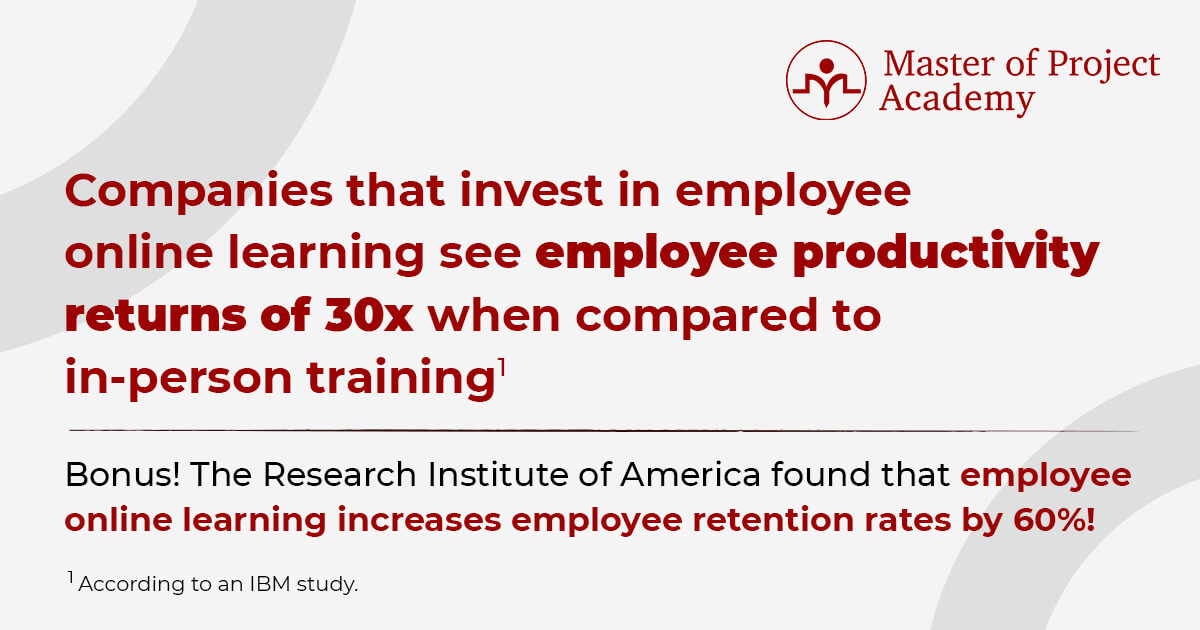Master of Project Academy’s 8-part series Horrible Bosses, No Good Bosses: The True Cost of Poor Leadership was created to address the most common ways poor leadership results in flat/declining revenues and increased expenses. In this series, we will explore the topics of Communication, Networking, Emotional Intelligence, Leadership, Discipline, Teamwork, Adaptability, Conflict Resolution, Empathy, Positivity, Decisiveness, and Persuasion.
In the 2nd and 3rd of our 8-Part Series Horrible Bosses, No Good Bosses: The True Cost of Poor Leadership, we discussed elements of intrinsic motivation and how employers can provide them. We narrowed our focus to four elements: Autonomy, Purpose, Growth, and Affiliation and did a deeper dive into Autonomy and Purpose. Today we will focus our attention on Growth.
Corrie’s Story
Corrie opens up the email containing the company’s Friday announcements. She hasn’t been contacted for the past two weeks regarding the promotion she wants. She knows she did well in both of the interviews, but the silence is not a good sign. Corrie has worked here for over ten years and has cross-trained in all of the positions within her department. The position she wants so badly is the one directly above her. When her manager announced 6 weeks ago that she would be retiring, Corrie immediately contacted the Director of her department, one position above the Manager. She shared her excitement for the opportunity and asked if there was anything she needed to do to throw her hat in the ring. The Director was happy to see Corrie’s enthusiasm and encouraged her to apply when the position was posted.
Corrie quickly submitted her application as soon as the job was posted and two weeks later was invited to a Round 1 Interview. After the 2nd Round interview, Corrie began to get really excited. She’d been waiting on this for more than 5 years. As she scrolls to the promotion and new hire section, she sees it. Someone outside of the company has been hired for the role and will begin on Monday. Fighting back her frustration, Corrie emails her director and states she’ll be taking some Flex time for the rest of the day. Dejected, she closes her laptop, picks up her bag, and leaves the building.

Important Benefits of Offering Opportunities for Growth
Corrie’s Director missed many opportunities to show strong leadership in our scenario. The lack of communication, for one, is a glaring stand out, but let’s focus our attention on a different element that is missing: opportunities for growth.
- Check out our PM Core™ – Project Management Training for Business
While pay is often noted as a major reason people leave jobs, it doesn’t hold the top spot. Multiple studies that surveyed employees who had left positions noted that the number one reason was listed as lack of opportunity or lack of career development. ¹ One poll found that 33% of workers cited not learning new skills as the reason they left their previous position, only 26% of workers rated their employee development programs positively, and 40% of employees stated dissatisfaction with career development in their exit interviews. ²
As we’ve reviewed before, employee turnover is very costly to an organization, both in terms of decreased productivity and dollars spent replacing employees. Organizations that do not appropriately address their employees’ need for growth miss out on opportunities to increase and improve deliverables and control costs.
What about the employees that don’t leave? The ones that are unhappy with their organization but choose to stay. What do they cost an organization? According to Gallup’s Global Workplace: 2022 Report, only 21% of workers, globally, are engaged. While the United States and Canada hold the number 1 spot, their numbers are still alarming at a mere 33%. ³ If you had to guess, how engaged do you think Corrie will be next week? Next month?
While it’s difficult to quantify the cost of disengaged workers, Gallup has estimated that they cost the world $7.8 trillion in lost productivity. ³ That’s a trillion with a ‘T.’

How to Provide an Environment in Which Employees Can Fulfill Their Needs for Growth?
Providing an environment in which employees can fulfill their needs for growth is an important way for an organization to protect itself from the high costs of disengagement and turnover. So, how can we do this?
An organization that wishes to be effective in meeting growth needs will need to create a learning culture. This involves a few key elements that include the following:
- Design clear career paths that provide road maps for employees.
- Design programs that provide the necessary trainings and development for employees to meet the requirements to advance in their career paths.
- Ensure high performers are given internal opportunities for advancement.
- Apply the needed resources to the internal programs (staff, time, money, etc.).
What are the Steps For Attending to Your Team’s Growth Needs?
So, what if your organization is not ready to do this? How do you meet your team’s needs? Your first step is to know your team. You need to understand what is important to your employee and have a clear view of their strengths and weaknesses. Remember, your job is to serve your team, not to simply provide deliverables for your leadership chain. Once you’ve learned about your team members, there are some practical steps you can take to ensure that you are attending to your team’s growth needs:
- Define the particular skills you both would like for them to obtain.
- Design a plan, together with the employee, for how they will obtain the skills.
- Incorporate the plan into their performance objectives. This ensures the appropriate focus from both you and the employee.
- Provide the employee with the time and resources to complete the work required to obtain the skills.
- Provide feedback and recognition to the employee as they begin the process of achieving their objectives.
- Advocate for the appropriate rewards for the employee as they grow in their positions. These can be promotions, bonuses, pay raises, etc.
- Rinse, repeat. Growth is not a “one-and-done” event, it’s a process. Once an employee has achieved the objectives you agreed upon, it is time to reassess what should come next.

Conclusion
Ensuring your employees have opportunities to grow is an excellent way for a leader to serve both their team and their organization. With polls reflecting how dissatisfied so many employees are with their potential to grow and advance in their careers, it is clear that mastering this aspect of employee motivation can make your team and organization attract and maintain the best talent.
In our next Horrible Bosses Blog, “Helping Them Connect,” we will continue our discussion on Intrinsic Motivators and will focus on how we can provide environments where our employees are able to fulfill that very human need of affiliation.
For more information on providing your leaders with Master of Project Academy’s Leadership Program, where your leaders will get instructive and hands-on training through interactive exercises, case studies, templates, and techniques that can be customized to your organization’s specific needs, click HERE.
References:
- 9 Reasons Your Best Employees Are Quitting
- Why employees quit: 11 evidence-based reasons
- State of the Global Workplace: 2022 Report

 Written by: Sandra Worley
Written by: Sandra Worley